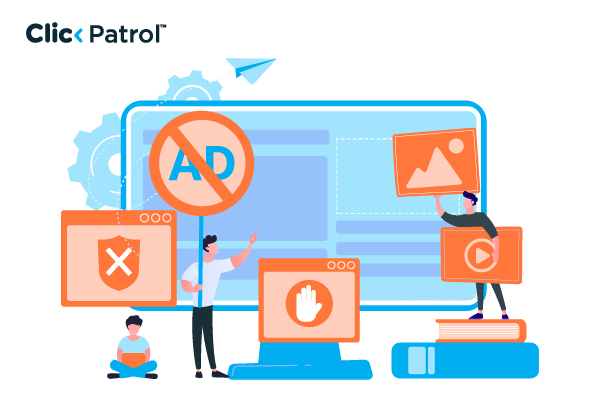The Q2 2025 LATAM click fraud benchmarks highlight that a significant share of clicks across mobile apps, desktop web and mobile web are still invalid, with mobile apps showing the highest exposure. The reports indicate that some LATAM markets and inventory types carry much higher risk than others, meaning advertisers need to factor traffic quality into budget planning, channel selection and how they interpret metrics like CPC, CTR and ROAS.
LATAM Click Fraud Benchmark: Q2 2025 Data Warns PPC Advertisers About Rising Risks Across Mobile & Web
Abisola Tanzako | Nov 20, 2025

Fresh Q2 2025 benchmark data on Latin America’s click fraud problem signals a clear warning for PPC teams: a significant share of ad interactions across mobile apps, desktop web and mobile web are still driven by invalid traffic rather than real users. For brands scaling in LATAM through Google Ads, Meta and Microsoft Ads, this level of click fraud distorts performance data, drains budgets and hides the true impact of campaigns.
Table of Contents
- Q2 2025 LATAM click fraud benchmarks: what the reports show
- Key click fraud findings for LATAM advertisers
- Mobile apps: highest click fraud exposure in LATAM
- Desktop and mobile web: less obvious, still costly
- Why Q2 2025 LATAM click fraud benchmarks matter for PPC strategy
- Practical steps for advertisers active in LATAM
- Cleaner data, safer budgets and more reliable growth
At ClickPatrol, we view these benchmark findings as further confirmation that advertisers cannot rely on platform reporting alone to understand traffic quality. Systematic detection and proactive blocking of fake clicks is becoming a core requirement for any serious growth strategy in the region.
Q2 2025 LATAM click fraud benchmarks: what the reports show
The Q2 2025 LATAM click fraud benchmark reports from Pixalate assess invalid activity across three environments: mobile apps, desktop web and mobile web. The data is based on ad traffic observed across the quarter and highlights how exposed advertisers are when buying media in the region.
The reports examined traffic patterns, click behaviors and technical signals in order to classify clicks as valid or invalid. While the exact figures differ by environment and format, the core message is consistent: a meaningful portion of LATAM paid media spend is still being consumed by non-human or abusive activity.
Key click fraud findings for LATAM advertisers
The benchmark reports contain a number of headline metrics that matter for PPC managers and agencies planning budgets for LATAM. The most relevant takeaways include:
- Q2 2025 invalid click rates in LATAM remain materially higher than in some mature markets, indicating continued fraud pressure on regional campaigns.
- Mobile apps show elevated exposure to click fraud compared with desktop web and mobile web, reflecting the complexity of in-app inventory and app-based manipulation.
- Desktop web and mobile web in LATAM also record non-trivial levels of invalid traffic, with suspicious activity often concentrated in specific publishers and traffic sources.
- Click fraud patterns vary by country within LATAM, which means performance can look strong in aggregate while particular markets are heavily contaminated by fake clicks.
- High invalid traffic rates undermine attribution models, making it harder for teams to trust metrics like CTR, CPC, CPA and ROAS when they do not account for fake engagements.
These benchmarks provide a useful external reference for what “normal” risk can look like in the region. If your own invalid click share is higher than the ranges highlighted in the Q2 2025 reports, there is likely a structural traffic quality problem in your acquisition mix.
Mobile apps: highest click fraud exposure in LATAM
One of the most important signals from the Q2 2025 LATAM data is the higher relative exposure of mobile app inventory to fraudulent and invalid activity. In-app environments offer many opportunities for bad actors, including automated installs, incentivized or accidental taps, and sophisticated bot traffic that mimics engagement across multiple apps and devices.
For performance marketers running app install or in-app engagement campaigns, inflated click numbers can give the impression of strong top-of-funnel performance while post-install metrics lag behind expectations. This disconnect often points to fake clicks and low-quality users that never had real intent.
With ClickPatrol, we typically see that app campaigns benefit disproportionately from independent click fraud protection. By analyzing behavioral signals per click, device-level patterns and repetition across placements, our systems can block suspicious activity in real time and prevent further spend on compromised inventory.
Desktop and mobile web: less obvious, still costly
While in-app traffic often draws the most attention, the Q2 2025 benchmark data shows that LATAM desktop and mobile web inventory also suffer from significant invalid traffic. Common threats include:
- Click farms cycling through ads on low-quality websites
- Automated traffic generated by scripts refreshing pages and triggering ad clicks
- Misleading placements that drive accidental clicks, especially on mobile web
- Domains and subdomains created primarily to monetize fraudulent traffic
These patterns tend to distort performance on the publisher or placement level. A few high-volume, low-intent sites can absorb a large share of spend while delivering little or no business value. Without detailed click-level analysis, campaigns keep optimizing toward these placements simply because they appear to generate “engagement” at a low CPC.
At ClickPatrol, we regularly help teams uncover such patterns by comparing clean traffic against suspicious segments. Once fake or low-quality sources are identified and blocked, advertisers often see overall volume drop but conversions and return on ad spend improve as budgets reallocate to real users.
Why Q2 2025 LATAM click fraud benchmarks matter for PPC strategy
The main value of these benchmark reports is not only the raw percentages. They provide a reference point that PPC leaders can use to gauge the health of their own traffic in the region and to justify investment in protection.
Some of the strategic implications include:
- Budget planning: If you know that a certain share of clicks in your vertical and region is likely to be invalid, you can plan media budgets and performance targets with that risk in mind.
- Platform mix decisions: Different channels and inventory types in LATAM show different risk levels. Benchmarks help you prioritize cleaner environments and tighten controls on higher-risk ones.
- Attribution and analytics: When invalid click rates are high, relying solely on native platform metrics can mislead optimization decisions. Independent visibility into traffic quality becomes essential.
- Agency accountability: Agencies can use third-party benchmarks to have more informed conversations with clients about traffic quality safeguards, pre-bid filters and post-click protection.
From our perspective at ClickPatrol, the Q2 2025 numbers underline that click fraud in LATAM is not a niche problem. It is a structural factor that should be built into how teams design, monitor and report on campaigns.
Practical steps for advertisers active in LATAM
For brands and agencies running or planning campaigns in LATAM, the Q2 2025 findings point to several practical next actions:
- Audit historical campaign data to identify suspicious spikes in clicks with weak on-site engagement or low conversion rates.
- Segment performance by placement, publisher, app and geo to highlight sources that over-index on clicks but underperform on outcomes.
- Ensure IP exclusions, geo targeting and frequency rules are used aggressively in markets or sources that align with known high-risk segments in the benchmarks.
- Use independent traffic quality tools to monitor click behavior across Google Ads, Meta and Microsoft Ads, instead of relying only on platform-level protection.
- Continuously compare your invalid traffic patterns to external benchmarks to see whether risk is increasing or decreasing over time.
ClickPatrol is built to support exactly this type of workflow. Our detection methods evaluate every click in real time, flag patterns that match known fraud tactics in LATAM and automatically block further spend from those sources. As a result, your analytics reflect real user behavior rather than inflated engagement.
Cleaner data, safer budgets and more reliable growth
The Q2 2025 LATAM click fraud benchmarks show that invalid traffic remains a significant hidden cost for advertisers in the region. Each fake or abusive click not only wastes money but also contaminates the data you rely on to optimize campaigns.
By combining benchmark insights with active protection, performance marketers can reduce noise in their datasets, improve confidence in KPIs and focus optimizations on placements that actually drive sales, leads or other meaningful outcomes.
If you are seeing high click volumes in LATAM but inconsistent business results, we recommend using these Q2 2025 benchmarks as a reference point and testing an independent layer of click fraud protection. You can start a free trial of ClickPatrol or speak with our team to review your traffic patterns and identify where budgets are most exposed.
Frequently Asked Questions
-
What are the main takeaways from the Q2 2025 LATAM click fraud benchmarks for PPC advertisers?
-
How does click fraud in LATAM affect my ad budgets and performance targets?
When a meaningful portion of clicks in LATAM comes from bots, click farms or other invalid sources, your campaigns pay for traffic that will never convert. This inflates click volumes, pushes CPCs higher and makes performance targets harder to hit. It also skews optimization algorithms, which may shift spend toward low quality placements that appear to drive cheap engagement but generate little or no revenue.
-
Why is mobile app advertising in LATAM particularly exposed to click fraud according to the Q2 2025 data?
The Q2 2025 data shows that mobile app inventory in LATAM experiences higher relative levels of invalid activity than desktop and mobile web. In-app environments are easier for bad actors to manipulate, with tactics like automated taps, incentivized clicks and spoofed devices. This leads to inflated install and engagement numbers that do not translate into real, long term users, especially for performance driven app campaigns.
-
How can ClickPatrol help me respond to these Q2 2025 LATAM click fraud findings?
ClickPatrol helps advertisers respond by inspecting every click across Google Ads, Meta and Microsoft Ads and identifying suspicious patterns that align with the types of invalid traffic seen in the Q2 2025 LATAM benchmarks. Our systems detect repeated abusive behavior, abnormal click sequences and other fraud indicators, then block further spend from those sources. This protects your budget, improves traffic quality and gives you cleaner data for optimization.
-
What practical steps should I take if I suspect my LATAM campaigns are impacted by high click fraud levels?
If you suspect high levels of click fraud in your LATAM campaigns, start by segmenting performance data by placement, app, publisher and geo to find sources with high clicks but weak engagement or conversions. Tighten geo and IP targeting, apply aggressive exclusions for suspicious domains and review attribution models that may be distorted by fake clicks. In parallel, trial a dedicated click fraud protection tool like ClickPatrol to monitor traffic quality in real time and automatically block invalid activity before it consumes more of your budget.






